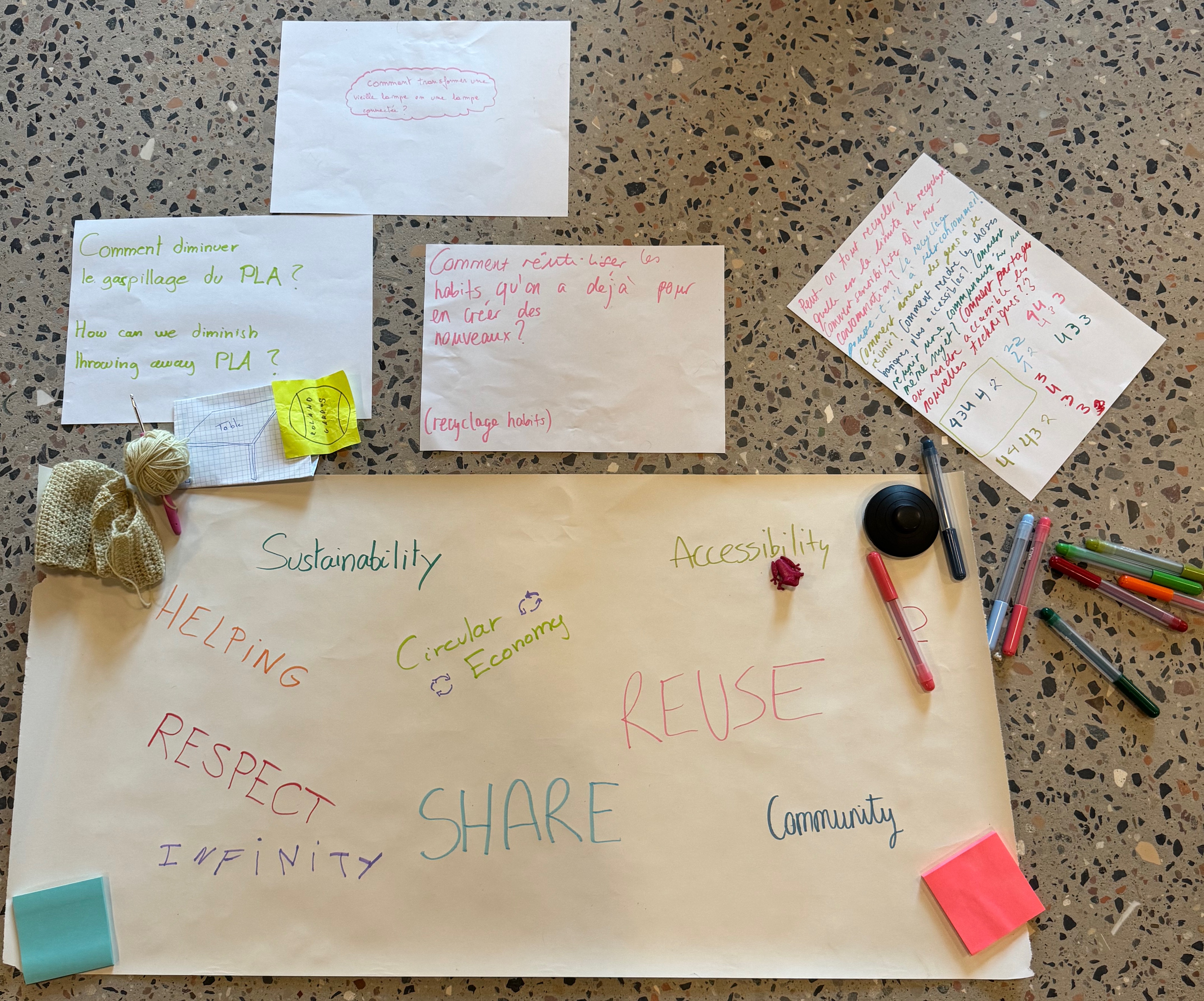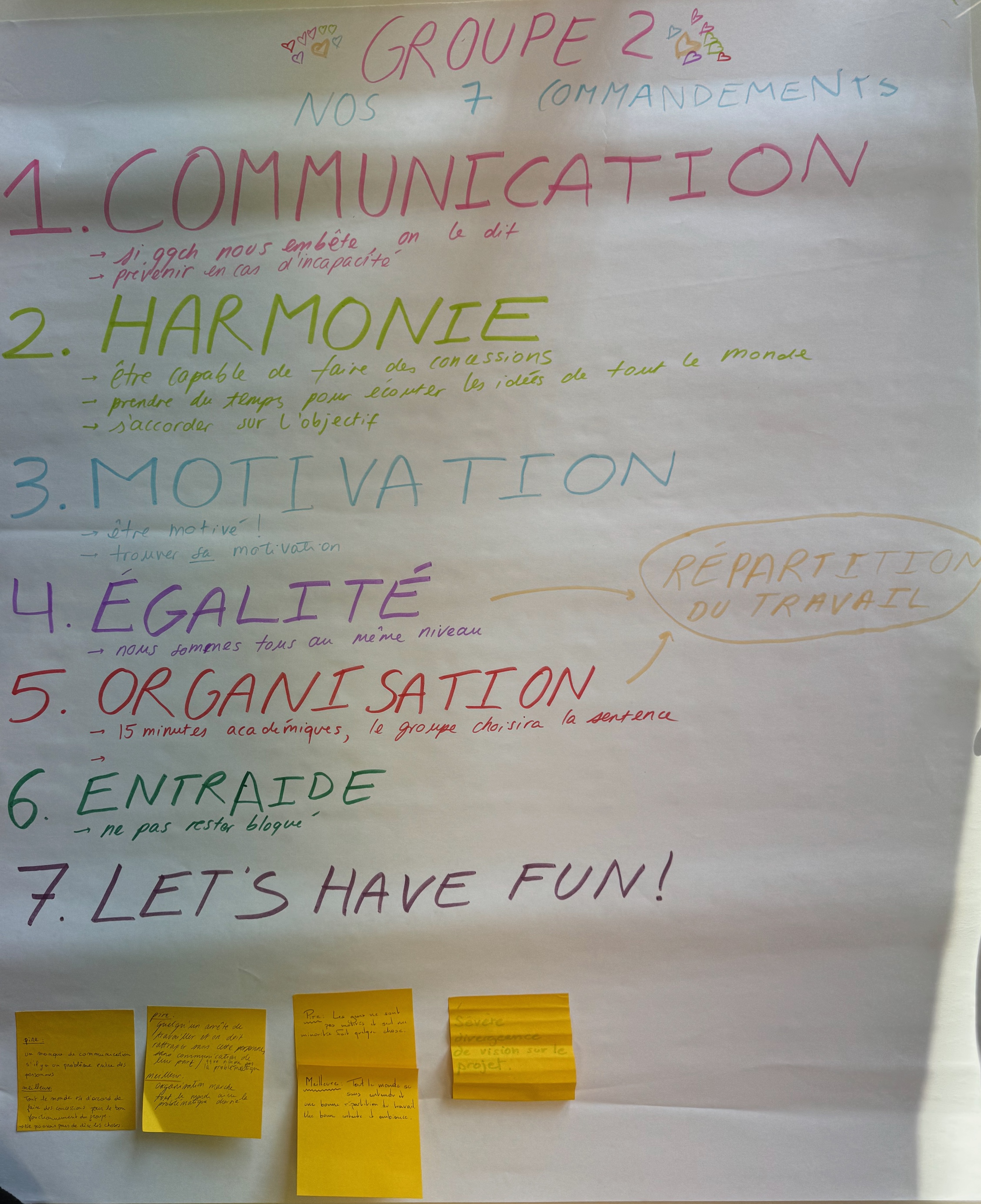5. Team dynamics and final projet#
This class has been an incredible ride of reflecting and discovering new things. Our teacher sprinkled just the right amount of guidance to keep us inspired and creative while letting us take charge of our ideas so now it’s time to start the group project to tackle a problematic.
Project analysis#
Before we dive into our own project, let’s warm up with inspiration from FabLab projects.
A gret starting point? Trees. Yes trees! (but not real ones don’t worry;))
Here is a quick video to understand.
For example, I explored Simone’s Vitale’s project : What can we do to improve the recycling process at the FabLab?.
Problem tree#
Here is how to grow a problem tree?
- trunk = main problem (What issue are we adrdressing)
- roots = causes (what’s feeding this issue)
- branches = consequences (what happens because of this problem)
- ramifications = secondary effects
Solution tree#
Let’s flip that tree into a solution/objective tree
- trunk = rephrase the problem into an objective
- roots = activities to develop/to reach the objective
- branches = project outcomes
Little tip : you ca use this app to visualize your tree ideas.
Group formation and brainstorming on project problems#
After the first session, I felt intrigued, surprised, curious,… and honestly just like, “what’s next?”
My object#
My object? A light switch. I love vintage lamps and believe in giving them a new life. My idea is to transform old lamps into connected lamps, with a wifi enabled light switch. Just imagine controlling your gorgeous retro lamp from your phone. It’s a stylish and sustainable way to reuse instead of buyin new ones!
Group formation#
To kick off, everyone brought an object to class. Based on the ideas and similarities of eachother, groups were made. After discussing for a little bit, here is we came up with :

Then we came up with a couple of problematics as quetions :
- Can we recycle everything?
- Whats the limit of recycling
- How to sensibilise about overconsumption
- Does recycling push to overconsume?
- How can we bring people together?
- How to make basic things accessible?
- How to bring together a community on the same subject?
- How to make new techniques accessible?
We rated these questions on a scale of 1 to 4 :
- 1 = I don’t want to do that
- 4 = I really want to do that
Digging into the problem#
We paired up to tackle different problematics.
We used a technique called “The 4 Why”. It’s like playing a detective but here is the twist, you have to keep asking “why” until you get to the root of the problem.
Team dynamic#
Okay, let’s talk group dynamics! Working in a group might sound easy but spoiler alert, it’s not always that simple! Since we are all different, establishing some ground rules to keep the peace and the productivity flowing is important! To help us out, a guest came in with all sorts of tools to help us build a great dynamic in the group.
Dividing roles and tasks#
In any good group, you’ve got to split the work. Here are the different roles :
- The facilitator : the person who kicks off the meeting, sets the goal and tells us where we are headed
- The secretary : the note-taker, so we don’t forget the million things we just discussed
- The time keeper : the one who makes sure we don’t lose track of time
- The mood master : the person who keeps an eye on and spots any potential drama before it explodes.
Our group decided to first rotate the roles so everyone gets a chance to find what he/she is best at. Who knew being the secretary could feel like an olympic sport?
The group rules#
Now to avoid chaos, we needed a solid charter. So we all shared our expectations, fears and hopes then created the ultimate group charter. This is our guide to keep things as smooth and stress-free as possible.

Making decisions#
Let’s be real, agreeing on everything as a group can be tricky. To avoid heated debates, we used a great techinique called motivated fingers.
Here is how it goes :
When it’s time to make a decision, everyone raises 1 to 5 fingers.
- 5 = I’m all in
- 1 = I’m not sold
It’s just like voting but in a less formal way.
Feedback time#
At the end of every meeting, we make sure to check in with each other. We ask : “Is everyone feeling good?”, “Any important things to add?”,… It’s all about keeping the group happy and motivated!
Next steps?#
With these tools, we are all set to hopefully keep our group dynamic good, fun and drama-free!
Let’s see what we will come up with and remember, it’s all about learning, experimenting and having fun along the way.
On to the next chapter!